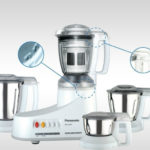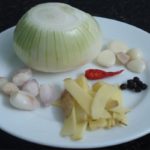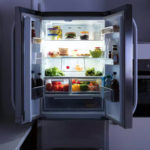The Art of Preserving Food with Plastic Wraps: A Comprehensive Guide
Nowadays, plastic wraps are an indispensable tool in many households. They not only help preserve food but also save time and effort for homemakers. However, not everyone knows how to use plastic wraps correctly to ensure both effectiveness and safety.
Proper Usage of Plastic Wraps
To ensure the most effective food preservation, you can use plastic wraps in the following ways.
Choosing the Right Plastic Wrap
The first important note when purchasing plastic wraps is to avoid cheap and unreliable products. The material must be safe because it will come into direct contact with food, and it should have good heat resistance and water resistance. The wrap should also be flexible and have good adhesion for easy food wrapping.
Low-quality products can be made from unsafe plastics that can be toxic. Poor-quality wraps can also allow air and moisture to penetrate through tears, creating conditions for bacteria to grow, which can harm the health of users.

You need to know how to use plastic wrap to ensure safety. (Photo: Shutterstock)
In addition, pay attention to the intended use to choose the appropriate type of wrap. For example, PVC wrap is suitable for dry food, while PE wrap is suitable for wet food. Using the wrong type of wrap can cause food to spoil or lose flavor.
Ensure Clean and Dry Wrap
Before use, make sure the plastic wrap is clean and dry. Plastic wrap is often stored in rolls and can collect dust, grease, or moisture. Unclean wrap can contaminate food and pose health risks.
Proper Handling
When cutting plastic wrap, avoid tearing it; cut the wrap into pieces that fit the size of the food to be stored to avoid waste and ensure safety.
Make sure to wrap the food tightly so that air cannot penetrate inside. Use your fingers to press firmly on the edges of the plastic wrap to ensure a tight seal, leaving no gaps, and helping to preserve the food as best as possible. Loose wrapping can allow food to become contaminated or lose flavor.
Caution When Using Microwave
If you intend to use plastic wrap in the microwave, make sure the type of wrap you choose is safe for this purpose. Follow the manufacturer’s instructions on how to use plastic wrap in the microwave to avoid the risk of fire and explosion.
Check Expiration Date
Always check the expiration date of the plastic wrap; do not use expired wrap to ensure food safety.
Store at the Right Temperature
Food wrapped in plastic wrap should be placed at the appropriate temperature. For example, frozen food should be stored at -18 degrees Celsius or below. For fresh food, you should also store it at a lower temperature to extend its shelf life.
Additional Uses of Plastic Wrap
By creating a sealed and low-air environment, plastic wrap helps extend the shelf life of food, reducing food waste and saving money. In addition to food preservation, plastic wrap also has the following uses:
Moisture retention: Some types of plastic wrap have the ability to retain moisture, preventing food from drying out and keeping it soft and fresh.
Chemical contamination prevention: Plastic wrap can prevent food from coming into contact with chemicals from the external environment, helping to protect the health of consumers.
Protection from mechanical impact: Plastic wrap can protect food from mechanical impacts such as bumps, scratches, or breakage during transportation and storage.
Convenience in packaging: Plastic wrap is easy to use and can be customized in size to suit each type of food, facilitating packaging and storage.
Source: VTC news
Explore 12 Amazing Destinations for Biking Trips
Unlock Vietnam in a brand new way with an exciting biking tour! Discover the stunning beauty of the country with Dien May XANH’s top 12 must-see destinations. From sweeping plains to clear blue beaches and mountainous vistas – experience all the sights with your own personal cycling tour. Find your ideal route and set out for an adventure today!
More Useful Advice for Homemakers (Part 2)
Have you heard of the surprisingly easy tips to make cooking and household chores simpler? White radish eliminates the acrid taste of salted meat, adding alum to raw shrimp helps soften it, and adding cold water when frying eggs can make them crispy – these are just a few of the tricks to make your life easier.



































